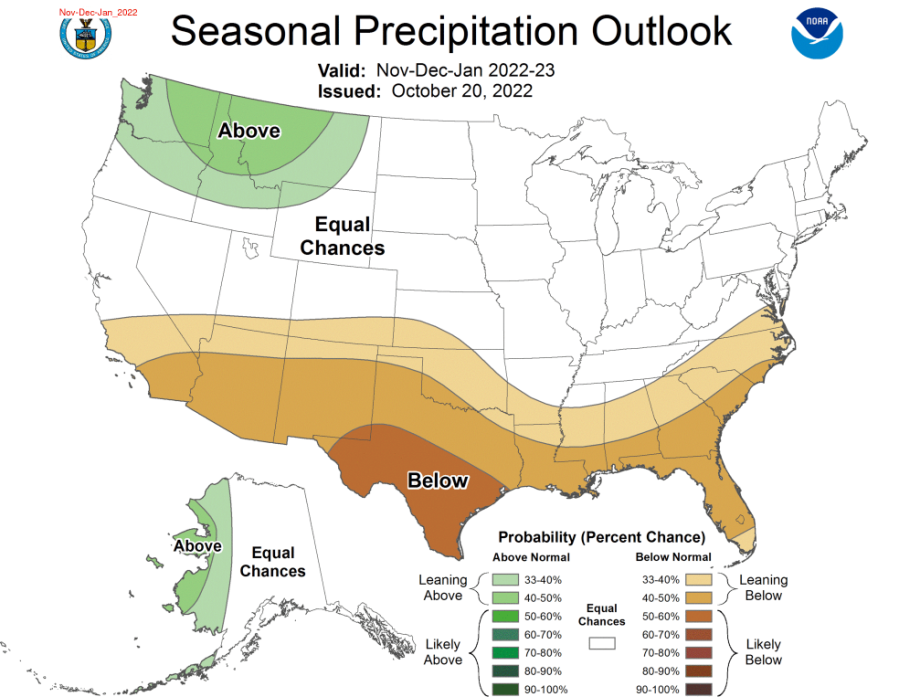NOAA releases winter weather outlook: How La Niña will impact your state
(NEXSTAR) – The Climate Prediction Center’s official winter forecast has been released, and it splits the country in two: hot and dry down south, and a mystery up north.
The 90-day-outlook was published Thursday morning by the Climate Prediction Center, part of the National Oceanic and Atmospheric Administration’s (NOAA) National Weather Service. It gives people a rough idea of what November, December and January will look like across the country.
The forecast is heavily influenced by the presence of La Niña, which forecasters recently said was 75% likely to stick around through the winter months.
La Niña tends to split the country in half, bringing a dry winter to the southern half and a wetter winter to the northern half.
You can see that pattern in the forecast map released Thursday (below): A band of dry conditions is expected from coast-to-coast, impacting the entire southern half of the U.S.

While La Niña looks like it will bring bad news to the already drought-plagued southwest this winter, it’s a different story in the Pacific Northwest. La Niña winters tend to bring more precipitation, not less, to the region.
The rest of the country is a bit of a mystery. Every state shown in white on the map above has equal chances of having above average precipitation and below average precipitation.
When it comes to temperature, it’s looking like it will be a warm winter this year for many states, according to the new NOAA outlook. The West, South and Northeast all have a good chance of above-average warmth between November and January.
The hottest conditions are expected in the southwest (Arizona, New Mexico and Texas).

If forecasters’ predictions hold true, and La Niña sticks around through January, it’ll be the third La Niña winter in a row – a rare phenomenon we’ve only seen twice since 1950. However, new research suggests recurring La Niña years are growing more common due to climate change.
Copyright 2023 Nexstar Media Inc. All rights reserved. This material may not be published, broadcast, rewritten, or redistributed. Regular the hill posts








